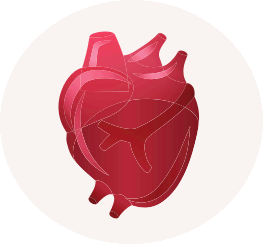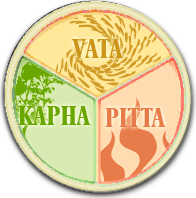BLOOD AND CIRCULATION HEALTH

 Categories in Blood and CirculationTemperature SignsWater RegulationCirculationHeartLymph / Blood PlasmaRed Blood CellsImmune-SystemLiver & GallbladderAround EyesEyesTongue CoatingTongue Surface / CracksTongue BodyPulseIntroductionBlood sustains life and is the foundation for health. Every system, organ, tissue and even every cell in the body depends on healthy blood for proper function. Healthy blood and healthy circulation are truly essential for strong organs and the health of the whole person.Blood is the keystone of beauty, vigor and vitality. But, how can a person maintain healthy blood from day to day? Is there a model for assessing the health of your blood at home without expensive machines and equipment? One of Ayurveda's biggest advantages is a simple model for home assessment and correction of blood level imbalances with diet and lifestyle techniques. With Ayurveda, you can improve your well being by addressing and correcting the blood. Good blood brings vitality to the whole body and enables your body to heal. Quality blood is key to preventative health as well. Knowing these techniques, you will be able to optimize your health, wellness and athletic performance. In this article you will learn this method. You'll start by learning the four main types of imbalances in the blood, and how to fix them. Then, you will also learn some specific techniques for blood health and wellness. Cardiovascular DiseaseBlood vessel health (vascular health) causes circulatory issues, which in cause heart problems. Cardioavascular Disease(CVD) is the number one cause of death - responsible for as many of 30% of deaths worldwide. Diabetes, chronic inflammation, smoking, lack of exercise, high blood pressure, and hyperlipidemia are significant factors leading to buildup of plaque, damage to vascular muscle, and atherosclerosis (athero = paste, sclerosis = hardening) of the arteries. Cardiovascular disease develops slowly, over many years.Ayurvedic Anatomy of the BloodIn Western medicine, blood and plasma are treated as one. In Ayurveda, blood (rakta) is considered to be a separate tissue from plasma (rasa). However, the two are still intrinsically linked and work together, side by side.Rakta - Red Blood CellsRakta consists of red blood cells. It warms and energizes every part of the body with prana as it carries oxygen throughout the whole body. Just as a fire needs oxygen to burn, your metabolism is a chemical fire that requires oxygen to burn. People who are anemic tend to feel cold because they can't transport enough oxygen to their tissues, so their "fire" is low.Rakta is hot, sharp, sour and penetrating. It becomes imbalanced when your diet contains too much of these same qualities - think hot, spicy foods. Rakta is already hot by nature, so taking in a heating diet will throw it out of balance. The proverbial chef who spends too much time in a hot kitchen becomes irritable due to overheated rakta. Similarly, spending too much time out in the hot midday sun will also overheat the blood. Rasa - Blood PlasmaYour blood plasma (rasa) carries food and nutrients to your cells after digestion is finished. Since rasa is full of nutrients, it is known as the essence or juice of the organism. It also acts as the protector, containing white blood cells and antibodies. Rasa also plays many other roles, including hormone delivery, removal of waste from the body as it transports carbon dioxide to the lungs and other waste products to the kidney.Rasa is soothing and nurturing. It is mostly sweet but contains trace amounts of the other five tastes as well. It becomes deficient if you are dehydrated from not taking in enough liquids or as a result of vomiting or diarrhea. Rasa is also imbalanced by sleeping too much, eating a diet that is excessively heavy or light, and by too little or too much electrolytes. Environmental and chemical toxins such as cleaning products, skin and hair care products, car emissions and air pollution will all pollute the plasma and blood. Blood & EmotionsIn Ayurveda, passions are in the blood. If blood is too cold, the person will be passionless. If the blood has toxins in it, emotions will be easily triggered and out of proportion to circumstances. When the blood is out of balance, the sensitive cells of the nervous system, and your emotions, will go haywire.When balanced, the passions are directed towards their proper goal. A person will desire what is good for them, and the strength of emotions will be adequate but not overbearing. Balanced blood brings balanced emotions. Balanced emotions show the meaning of events, without undermining reason or ability to think. Blood not only affects emotions, but emotions affect the blood. If a person is betrayed, or circumstances trigger strong emotions, a flood of hormones will be released that disturbs rasa. Rakta will "heat up" with anger, or "cool down" with depression. In our clinic, we frequently see clients whose health problems that started during a stressful and emotional life event. After an emotionally stressful life event, we recommend seeing an Ayurvedic practitioner to rebalance the blood. What Causes a Blood Imbalance?No two bodies will contain the exact same type of blood. Diet, lifestyle, environment and emotions can all alter the state of the blood and lead to a unique type of imbalance. Each individual's blood will be different due to their constitution and digestive type. Those with weak digestion and metabolism will have more toxins (ama) circulating in their bloodstream.Ayurveda's approach to blood assessment is based on the (gunas). This method of using the gunas takes about an hour or two to learn, but brings lifelong benefits. The gunas not only show how conditions in the blood are related to diet and lifestyle, it also makes it easy to identify remedies. Hot BloodOne of the most common imbalances in the blood is "hot blood." Irritability is one of the first signs of hot blood. A red face, rashes, and other signs of systemic inflammation indicate hot blood. A high fever, a yellow color in the corner of the eyes, and yellowing of the teeth can indicate hot blood as well.In this type of imbalance, there may be systemic inflammation. The liver, or immune system, may be weakened or overwhelmed. Or, possibly an infection may be involved. The cause of hot blood is an excess of fiery Pitta dosha due to improper lifestyle habits and eating heating foods that aggravate Pitta. An excess of sour foods, too much red meat, cigarettes and alcohol aggravates the liver and makes the blood (rakta) hot. Sweet, Thick BloodAnother common imbalance in the blood is "sweet blood." Signs of sweet blood include mucus congestion in the morning, feeling tired throughout the day despite little activity, and weight gain. A person with sweet blood may also feel stuck in life or even depressed.In this type of imbalance, the blood is generally thick, oily, congested and stagnant due to an excess of Kapha dosha. Sweet blood can lead to conditions including high blood pressure, poor circulation, fatigue, and high cholesterol. The thyroid, heart, and pancreas are typically involved, since these regulate metabolism and blood sugar levels. Sweet thick blood is caused by eating Kapha provoking foods such as excess sweet, oily, fried foods and a sedentary lifestyle. Dry, Thin BloodA person with dry, thin blood tends to be underweight and have dry skin. They may feel easily cold, and may be fearful or anxious. Signs of poor digestion including gas, bloating, and constipation are common."Dry blood" is an imbalance typically associated with Vata dosha and deficiency (low ojas). The person may have anaemia and low blood pressure. The kidney is often involved, since the kidney regulates both the volume of water and electrolyte concentration in the blood. Dry, thin blood is typically caused by strict dieting, not eating enough foods, or eating foods that are light in nature. A person with dry blood should avoid eating Vata provoking foods, especially those that are diuretic. Cold BloodThe blood is supposed to be warm and invigorating. However, in some individuals, the blood can actually be too cold. Some signs of "cold blood" include cold extremities, inability to warm up, low energy, pale skin (perhaps even turning slightly purple or blue) and weak digestion. A person can feel cold for many reasons, such as when rasa is deficient (dry) or congested (sweet). However, these cases are simply complications of the above patterns. Cold blood, in this case, refers to a condition where rakta is cold. This is often due to anemia. The oxygen carrying capacity of the blood is diminished because there is a lack of red blood cells. Or, the circulation of the blood is diminished due to weakness of the heart, atherosclerosis, low metabolism, or other factors. Cold depresses metabolism and circulation, and a person with cold blood lacks umph. Toxins - Ama in the BloodIn Ayurveda, a main source of a blood imbalance is digestive toxins, known as ama. These toxins accumulate in the GI tract, and can build up to such levels they eventually spill out into the bloodstream and circulate throughout the entire body. Ama can cause an array of disorders, including a variety of blood imbalances.Blood TonicsSo what can be done to re-balance the blood?Rebalancing Hot bloodHot blood is balanced by foods the cool and support the liver, and rebalance blood chemistry. Herbs that reduce inflammatory compounds and excess bilirubin in the blood are effective. These include bitter herbs such as aloe vera, neem, and Brahmi. Anti-oxidant rich herbs like amalaki directly refresh blood, making your eyes feel cool and relaxed. Manjistha clears pitta from the skin, helping to reduce rashes related to hot blood.Rebalancing Sweet BloodSweet blood generally requires cleansing and lightening therapies. Bitters such as neem and blood thinning herbs such as guggulu can help reduce fats in the blood. Cinnamon and gymnema can reduce blood sugar levels. Diuretics, like dandelion root and CCF tea can clear excess water weight.Rebalancing Dry BloodDry blood needs hydration first and foremost. This must be followed by a rich ojas building diet with nourishing foods. Easy to digest fats, such as ghee and coconut oil, are essential to enriching the blood. Sour taste can temporarily relieve dryness. Salt, since it encourages water retention, offers a more stable remedy. Try both together by squeezing a wedge of lemon or lime in warm water with a pinch of mineral salt. This rehydrates the blood and helps balance electrolytes.Strength building herbs such as ashwagandha or a cup of warm and sweetened golden milk nourish dry, deficient blood. If digestion is weak, bone broth soup is an easy to digest option that replenishes vital minerals. Demulcents such as licorice root help rehydrate the body in dry, Vata conditions. Rebalancing Cold bloodCold blood needs warming, stimulating and building remedies. Red meat contains high levels of iron and is the strongest food for building blood. Iron rich vegetarian foods such as tofu, lentils, cashews, pumpkin seeds, and spinach, are also helpful to include in your diet if you have cold blood.Small amounts of pungent herbs and spices will warm up and stimulate cold, stagnant blood. Fresh ginger clears cold from the body and invites warmth into the blood, increasing peripheral circulation. It also clears toxins (ama) from the blood. Turmeric may be used to invigorate the blood. It has a stimulating effect on the liver, increases blood flow and helps purify the blood. Hot, pungent and light, it stimulates circulation and warms the blood. Turmeric also protects red blood cells, reducing anemia. Warming and nutritive, chyavanprash rejuvenates and builds cold blood by increasing haemoglobin and white blood cells. It also has a heating energy (virya) that combats coldness, stimulates circulation. Also, chyavanprash is considered a heart tonic, benefiting circulation. Pungent and light, saffron has an invigorating effect on rakta and helps warm up cold blood. ConclusionHealthy blood nourishes every cell in the body. It flows through the body like a river, transporting essential nutrients and collecting waste. It ensures every tissue, organ and system has the fuel it needs. However, the pervasive nature of blood means that, once it is imbalanced, the whole body is imbalanced. Blood not only transports nutrients around the body, it also transports toxins. So care must be taken to ensure your blood has the purity, balance, and vitality your body needs for optimal health.Ayurveda offers a practical theory of classifying blood disorders by qualities - like hot, cold, sweet and dry - so the root cause can be corrected. With the right lifestyle, diet, and herbs, you'll be able to strengthen and cleanse the blood, bringing vitality, vigor and balanced emotions to your life. Herbal Actions Affecting Blood and Circulation
HOW AYURVEDA WORKSARE YOU WONDERING HOW AYURVEDA CAN HELP YOU?WHY IS AYURVEDA THE RIGHT SOLUTION?Ayurveda strengthens the body while opposing disorders. It takes a holistic, systemic approach that looks at the whole body. Ayurveda shows how to interpret signs and symptoms of imbalance, and how to address them using diet, lifestyle adjustments, and herbs. It shows a person how to optimize their health on a continual basis. You can't take the doctor home with you, but you can take Ayurveda home with you. Ayurveda is the most advanced and easy to use home system for self healing.HOW DOES AYURVEDA WORK?Ayurveda starts by identifying your body type, which identifies certain tendencies in your body to get sick (as well as identifying your strengths). It uses body type to determine the likely root causes of your disorders. Next, Ayurveda analyzes the nature of your disorder. It fits all your signs and symptoms into a pattern, expressed as a combination of biocharaceristics (gunas). For example, you may have a heat disorder, a cold disorder, or an oily disorder, etc. This simple categorical approach shows you how to correct systemic imbalances and strengthen your body as a whole.On Joyful Belly, we've created an extensive categorization of food so you can easily match food to your imbalanced biocharacteristics. By eating an optimal diet that balances your biocharacteristics, your whole body is strengthened and the conditions that created the disorder are removed. Once the root causes of the disease are removed, the disease lessens in strength or disappears altogether. Additional remedies - such as herbs and lifestyle practices - focused on the specific disorder, can greatly enhance your healing. GET STARTEDTo get started on your Ayurvedic journey, we first recommend that your find your body type by taking our free quiz. In Ayurveda, every solution is based on your unique body type, so by taking this quiz, you’ll get the best results. |
Join Joyful Belly.
Want our top Ayurvedic recipes and health tips?Subscribe to our free newsletter!






